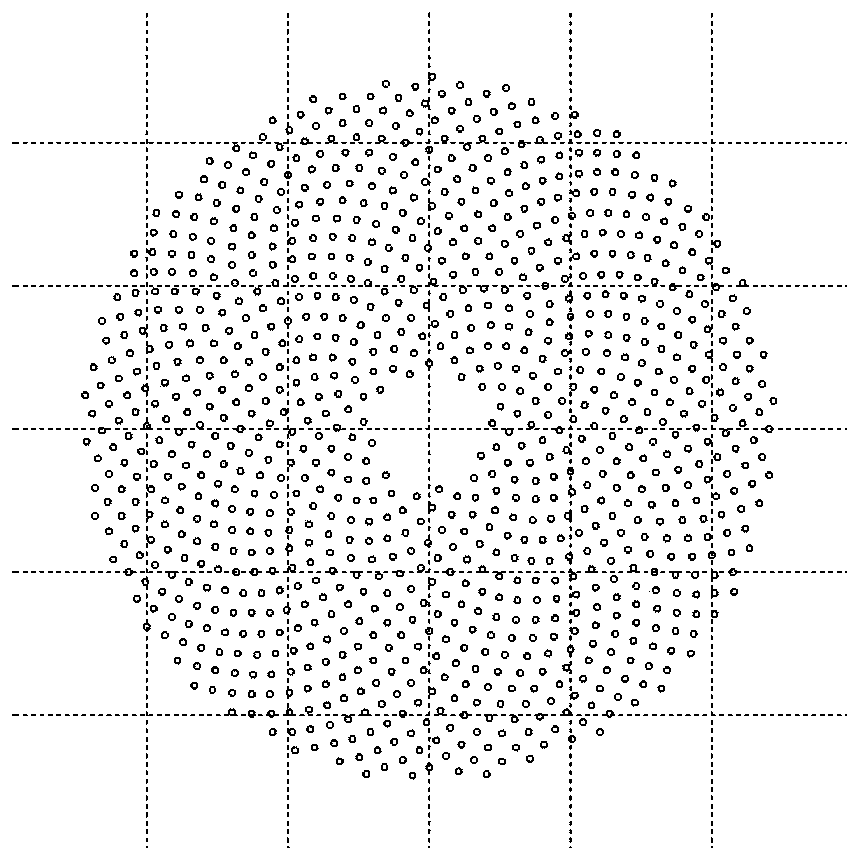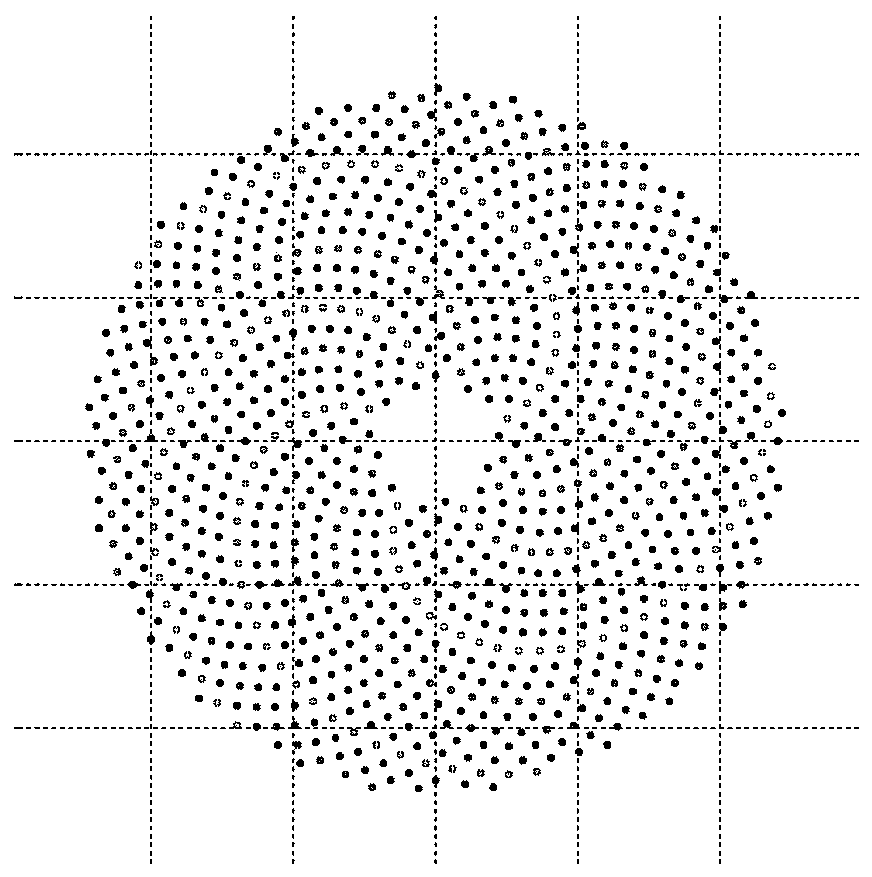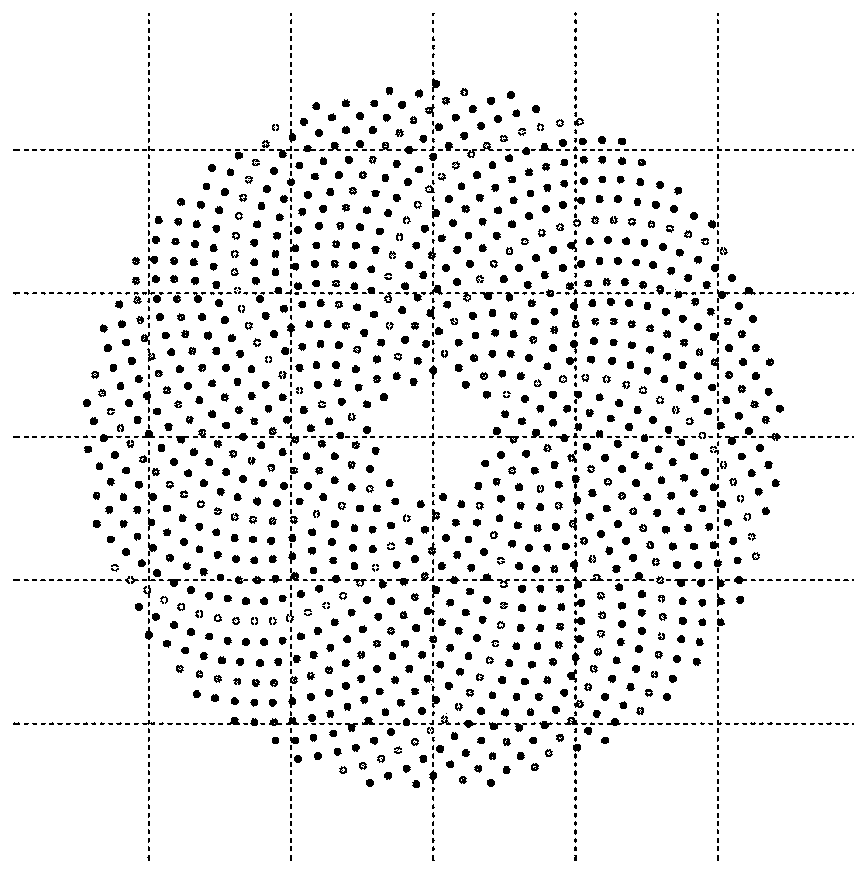A new type of arrangement method of bionic solar photothermal mirror field
A solar and bionic technology, applied in computational models, biological models, system integration technologies, etc., to achieve the effects of reducing shadow and shading losses, low land use area, and speeding up the measurement process
- Summary
- Abstract
- Description
- Claims
- Application Information
AI Technical Summary
Problems solved by technology
Method used
Image
Examples
Embodiment 1
[0048] The present invention is an improved method based on bionic mirror field arrangement, which is inspired by the arrangement of leaves, branches, stems, etc. of plants, as shown in the attached figure 1 As shown, the order of arrangement of phyllotaxy or seeds of many plants in nature follows an optimized method, which can make all seeds have the same size but be properly dense, so as not to crowd too much at the center of the circle. The seeds are sparse at the circumference, ultimately keeping the system at the lowest energy level (getting the most sunlight with the least number of leaves or seed area). Based on this idea, the standard bionic heliostat field can be obtained by designing the bionic spiral and arranging the heliostat field according to the bionic spiral. The bionic heliostat field is a method based on However, for the standard bionic mirror field arrangement method, it is difficult to determine the optimal bionic spiral. At the same time, due to the use o...
Embodiment 2
[0063] On the basis of Embodiment 1, since the ultimate goal of mirror field arrangement is to improve the mirror field efficiency as much as possible, in order to optimize the heliostat field, it is necessary to first determine its efficiency calculation method. Generally speaking, the efficiency of the mirror field needs to be composed of several parts such as cosine, atmospheric attenuation, spillover, shadow and occlusion. Only by minimizing the losses in all aspects can a high mirror field efficiency be guaranteed.
[0064] Since the cosine efficiency and atmospheric attenuation losses are mainly related to the mirror field coordinates. Therefore, affected by these two factors, the distribution density of heliostats is also different when the efficient heliostat field is at different distances from the central heat absorption tower. The distribution density of heliostats close to the central heat absorption tower is high, and the distribution density of heliostats far aw...
Embodiment 3
[0073] When we solve the problem of mirror field efficiency calculation, we can evaluate a specific mirror field, and the arrangement with higher mirror field efficiency will have certain advantages over other solutions. Common traditional mirror field optimization methods mainly include: linear staggered arrangement method, radial grid method, year-round non-blocking method, etc. The linear staggered arrangement method is simple to implement, and it is easy to obtain a higher mirror field density, but it is not suitable for the needs of larger-scale mirror fields; the radial grid method can reduce excessive shadow and occlusion losses, but most of the heliostats of adjacent two rings The number of mirrors is equal, so that the actual increased perimeter is wasted, and the land cannot be fully utilized; the land utilization rate of the year-round no-shade method is not high, and it is rarely used in practice.
[0074] It can be seen that these traditional algorithms have some ...
PUM
 Login to View More
Login to View More Abstract
Description
Claims
Application Information
 Login to View More
Login to View More - R&D
- Intellectual Property
- Life Sciences
- Materials
- Tech Scout
- Unparalleled Data Quality
- Higher Quality Content
- 60% Fewer Hallucinations
Browse by: Latest US Patents, China's latest patents, Technical Efficacy Thesaurus, Application Domain, Technology Topic, Popular Technical Reports.
© 2025 PatSnap. All rights reserved.Legal|Privacy policy|Modern Slavery Act Transparency Statement|Sitemap|About US| Contact US: help@patsnap.com



